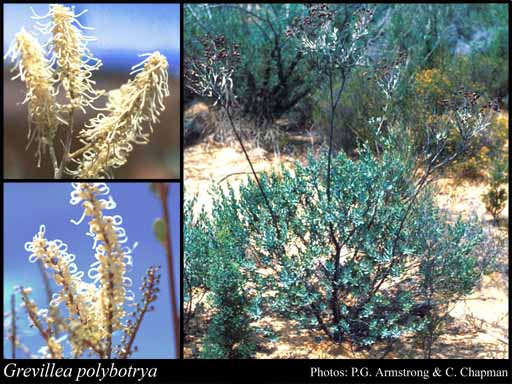- Reference
- A.DC., Prodr. 14:386 (1856)
- Conservation Code
- Not threatened
- Naturalised Status
- Native to Western Australia
- Name Status
- Current
Erect, bushy, non-lignotuberous shrub, 1-4 m high. Fl. white-cream/yellow, Sep to Dec or Jan to Mar. Grey or yellow sand.

Scientific Description
Shrubs, 2-4 m high; branchlets hairy, not glaucous. Leaves alternate, 12-50 mm long, 6-12 mm wide, hairy or glabrous, on the adaxial or abaxial surface, the hairs straight; lamina flat, clearly widest above the middle, entire, the margins flat. Inflorescences terminal, white or cream; pedicels 0.2-0.5 mm long. Perianth 2-4 mm long; tepals some joined and some free after flower opens, glabrous or hairy, simple-hairy; ovary glabrous, stipitate, the stipe 0.5-1.5 mm long; pistil 8-10 mm long, white or cream, pollen presenter conical or erect, style glabrous. Follicles glabrous, not viscid, dehiscent, 11-15 mm long. Flowers in September, October, November or December. Occurs in the Eremaean (ER) or South-west (SW) Botanical Province(s), in the Yalgoo (YAL), Geraldton Sandplains (GS), Swan Coastal Plain (SWA) or Avon Wheatbelt (AW) IBRA subregion(s).
Distribution
- IBRA Regions
- Avon Wheatbelt, Geraldton Sandplains, Swan Coastal Plain, Yalgoo.
- IBRA Subregions
- Dandaragan Plateau, Geraldton Hills, Katanning, Lesueur Sandplain, Merredin, Perth, Tallering.
- Local Government Areas (LGAs)
- Carnamah, Coorow, Dandaragan, Goomalling, Greater Geraldton, Moora, Tammin, Three Springs, Wongan-Ballidu.